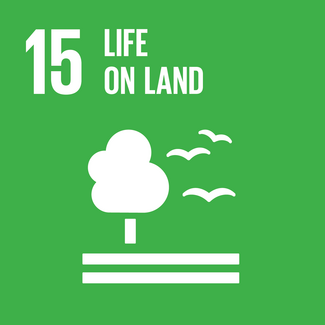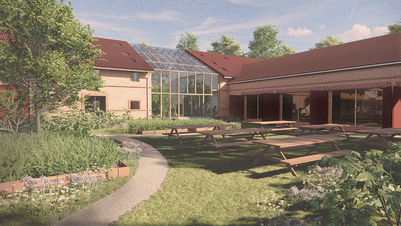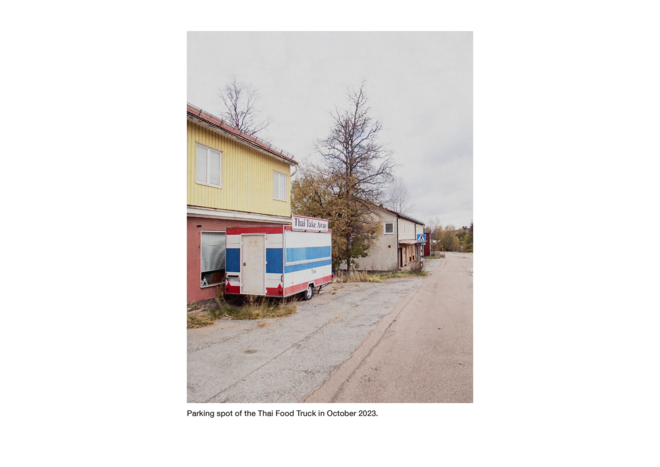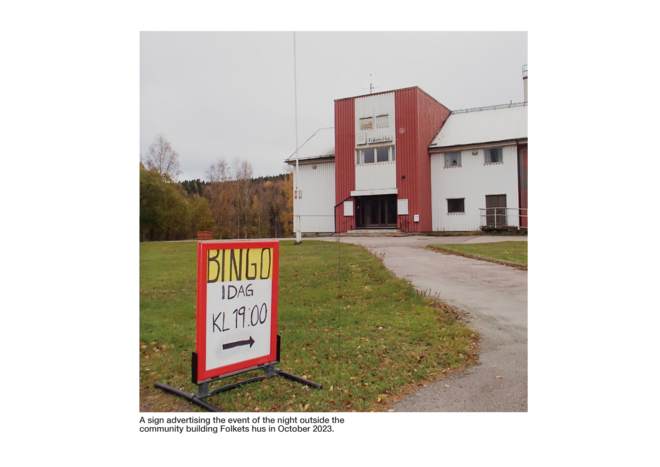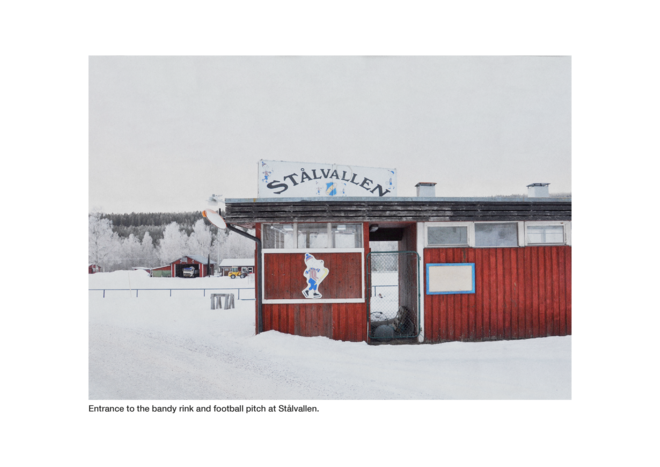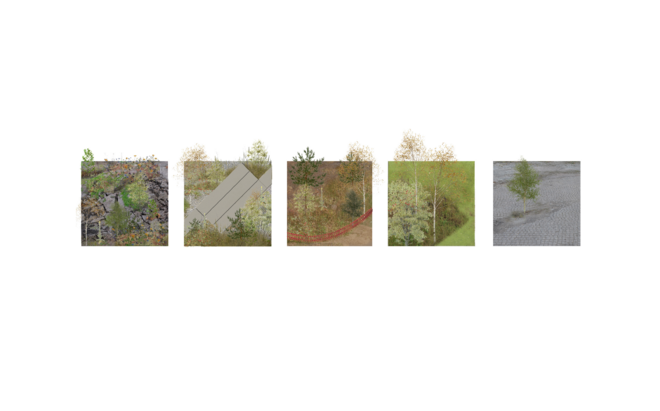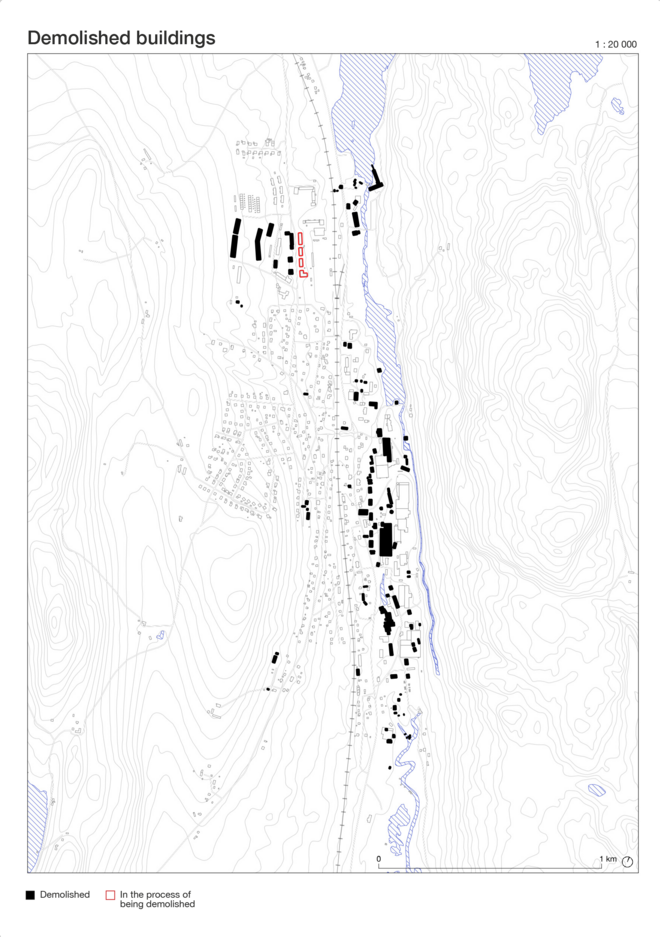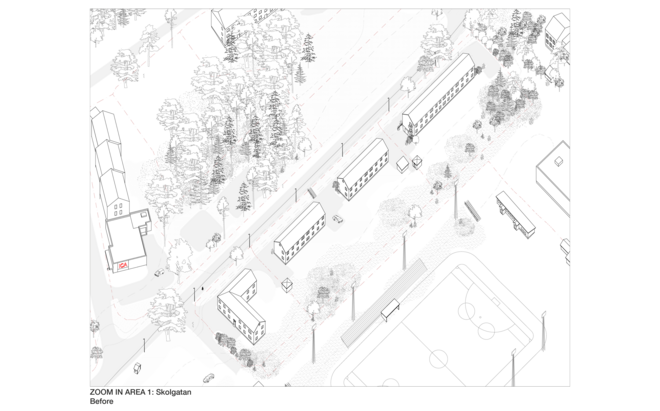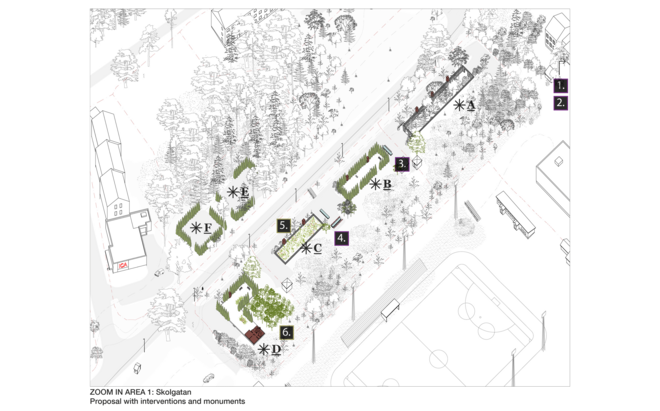

Imagining the future of Lesjöfors - A bruksort* shrinking within a system of growth
This project aims to investigate the future of the bruksort (industrial town) typology in Sweden by challenging the prevailing focus on growth in the Swedish municipal planning system. By exploring a wider set of roles of the architect post-growth this project seeks to envision the future of Lesjöfors, a town in decline that since its peak has lost around 70% of its inhabitants.
bruksort*
“bruk”- early local industrial plant / mill / factory
“ort” – town / village / place

The population in Sweden is growing but the demographic development is uneven. According to Statistics Sweden the larger cities will continue to grow while the small places in the periphery are expected to shrink. One typology that especially faces decline is the Swedish Bruksort, rural industrial towns centred around one specific mill, factory or ironwork.


but if not growth; then what else?
Considering the discussion that our discipline needs to move away from extractive and carbon intensive practices, places like the bruksort where nothing new needs to be added, but instead maintained or even demolished, provides an opportunity to practise alternative ways of spatial planning.
»Given the time of environmental crisis and material scarcity we need to question the role of the architect as someone involved in adding ‘more stuff to the world’.«
Till & Schneider, 2012, Invisible Agency. Archit Design, 82: 38-43
The bruksort Lesjöfors in Värmland will act as a testing ground.
Lesjöfors was once the symbol of the prosperous industrial town of Folkhemmet but has since its peak lost around 70% of its inhabitants. Today many of the buildings are vacant or abandoned and the demolition that has been going on for the last decades have left gaps in the urban structure and created concerns among the people who live there.
The project tries to explore the implications of the prevailing growth focus in the context of the bruksort. The decline strategy of Lesjöfors aims to promote practices of subtraction, redistribution and maintenance, rather than expansion and novelty. The potential of this will be explored through interventions on an architectural scale. The strategy and interventions are based on analysis conducted with the help of different voices and perspectives of Lesjöfors.


Along Skolgatan four apartment buildings built in 1947 are in the process of being demolished due to vacancy. Instead of business as usual and replacing the buildings with a lawn or a square of asphalt, remnants of the foundation of the buildings are kept to testify what used to occupy this place. In some places a tall hedge marks where the building used to stand. The apartment of the Eriksson family is celebrated through a brick monument, the Erikssons lived in the same apartment on Skolgatan since it was built in 1947 until now when forced to move out.

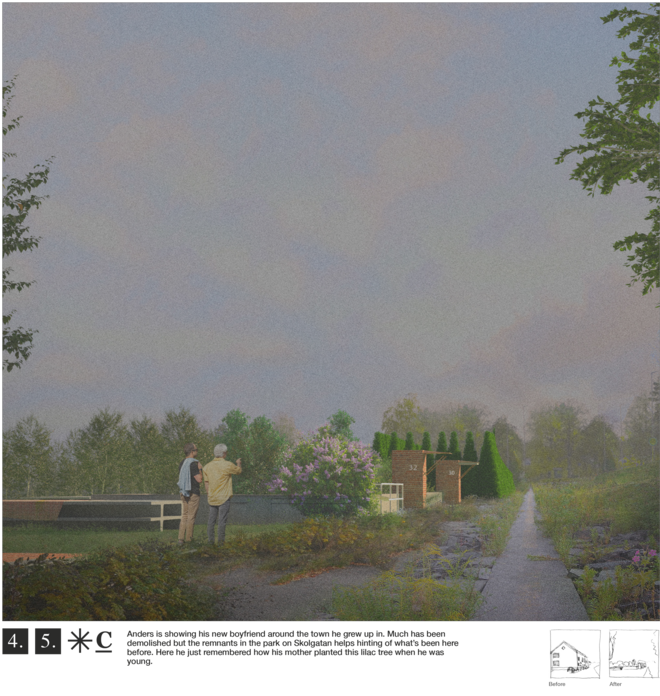


Road 26 that runs through the town is according to inhabitants to blame for the bad reputation of Lesjöfors due to the state of many more or less vacant buildings with plots filled with debris. Along this road is also Kafé Lyktan located, a place where many events of the town take place. The lawn outside Lyktan is kept for the events but the wild growing vegetation is allowed to take up more, but clearly defined space. On the other side of Parkgatan one of the vacant sheds from the industrial areas have been moved and renovated and serves as an outdoor seating for the thai food truck that usually sits a little bit further down the road.



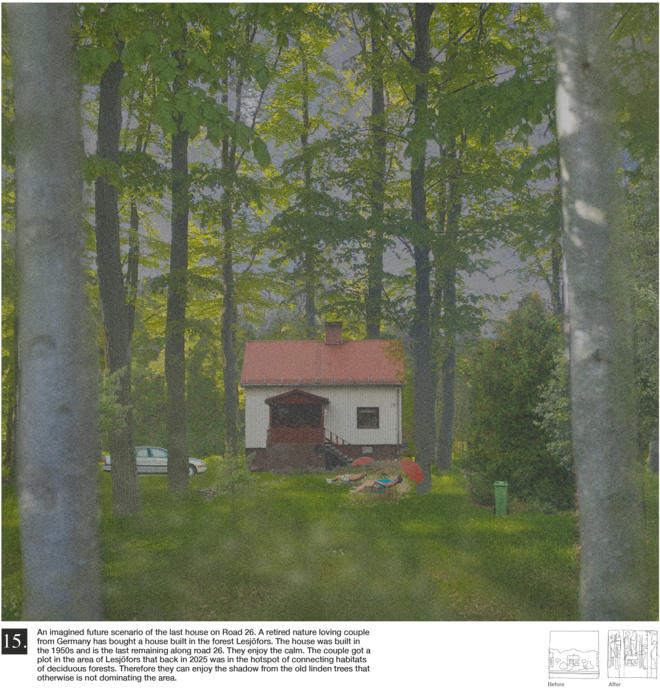
This imagined future scenario of the southern parts of the industrial areas is showing what obsolete parts of the industrial areas could become if the industry leaves. Instead of removing the whole buildings and covering up the traces of the companies that used to inhabit the spaces, the ruin could be seen as part of a social process of remembering and coming to terms with the new future of the bruksort - at the same time as is gets another function when more than human life is taking over.
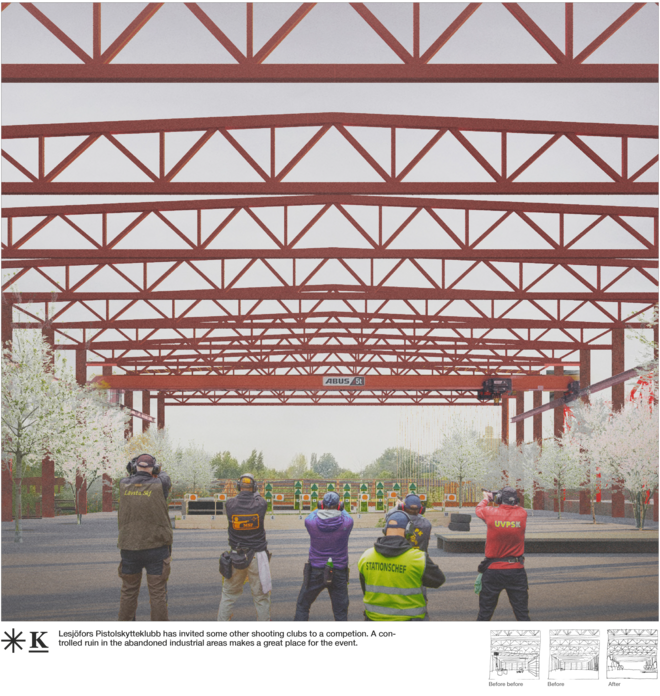


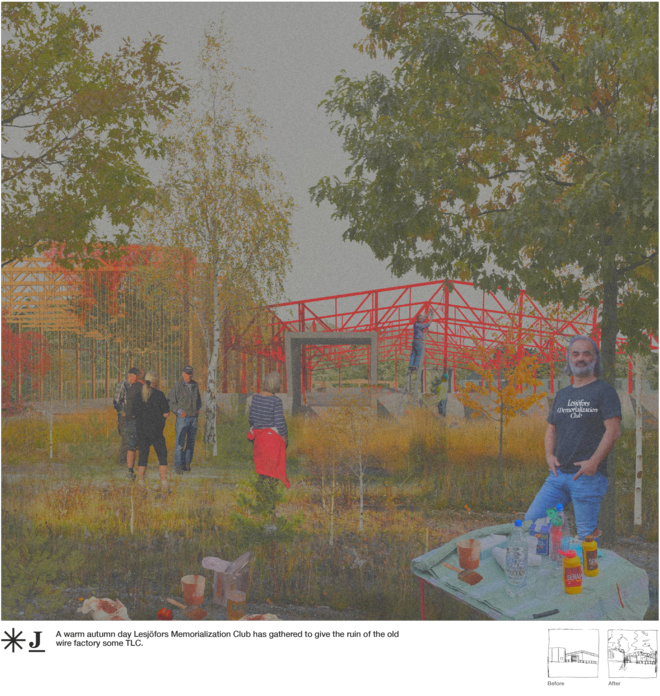





Det Kongelige Akademi understøtter FN’s verdensmål
Siden 2017 har Det Kongelige Akademi arbejdet med FN’s verdensmål. Det afspejler sig i forskning, undervisning og afgangsprojekter. Dette projekt har forholdt sig til følgende FN-mål


